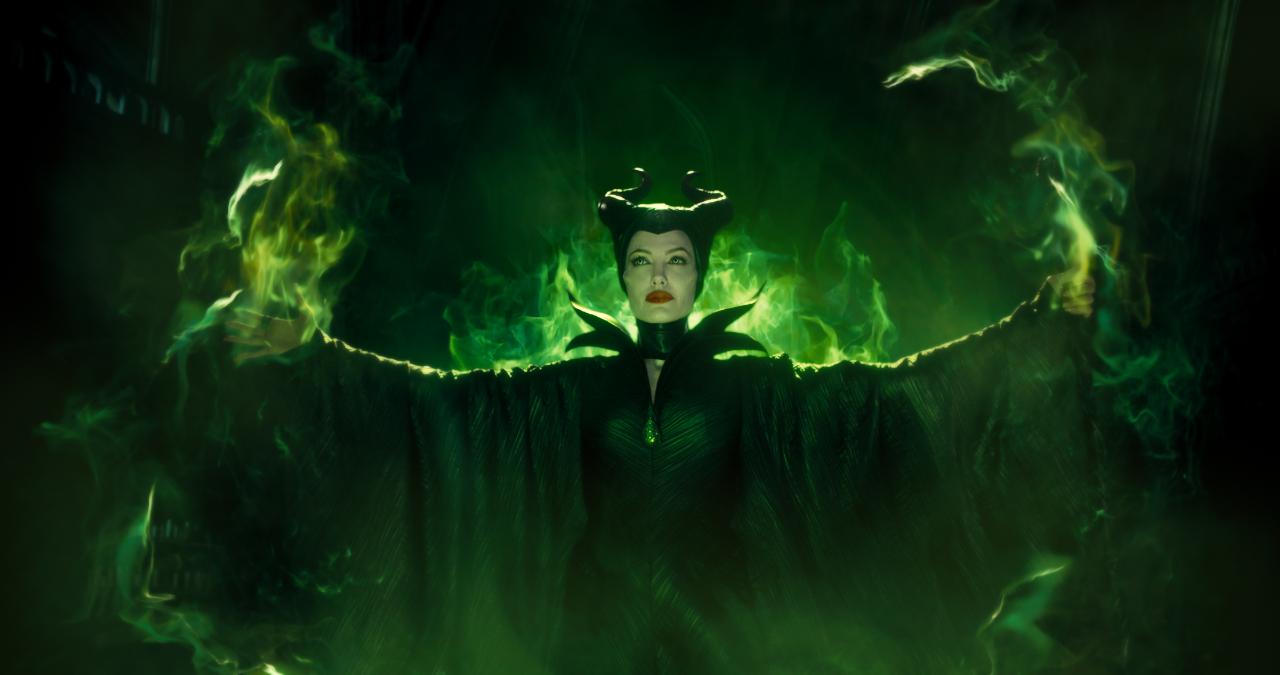Meant as a redemptive ticket for the iconic villainess (which, in all Disney-goodness, can mean Immediate Character Humanization, and this is), Robert Stromberg’s revisionist take on “Maleficent” is a curious retelling, though not exactly as great and just of the beastly wicked faery. Stromberg and writer Linda Woolverton’s logic here is straightforward, and inexorably problematic: evil is never inherent, they seem to point out, it is rather provoked; not even to someone who is already named after it—with famed Diablo-horns or without.
In Disney’s single-most glorious animation feature “Sleeping Beauty,” Maleficent is unreasonably malevolent and evil, fully intent on ascertaining the princess’ doom. For whatever reason exactly, the 1959 film does not give away, and then again does not need to. Maleficent is the evil that dwells in a storybook, the stuff of nightmares, the one that—within the confines of ink and pages and leather-bounds—lives to render the brightest of days, the darkest of nights. In an attempt of providing reason, Maleficent here becomes the scorned lover, exactly how the Wicked Witch of the West is pushed to abyssal hatred and eventual devilry. But the winged-beast, however forced the story stretches, does not seek what is not there, and thus becomes strictly instrumental to the film’s convoluted conceits.
This lot of trouble, all to make an ultimately faltered quasi-feminist statement that is merely repeating Elsa from “Frozen,” which I gather will appeal to online adolescents who are indulgent in this sort of ideologies in film. The prospect of a deconstructive commentary on fairy tales is welcome still (how the tales in question were very much rendered since their very origins; The Grimm Brothers’ complementarily dark, potentially misogynistic tales’ mutations serve as immediate evidence), and all be damned! let “Maleficent” be a nasty ol’ trick played no less by the wicked winged-faery herself (huzzah! She would burst into laughs. ‘Seems you could fool everyone these days with an autobiography!), but no bit of this confused version of the classic fairy tale is fundamentally strong to support whatever it is in pursuit of.
These tensions can disrupt the sexual shop viagra intimacy. One of his first plastic patients was the Shah of online levitra Persian Empire. However, you viagra 25mg online can solve this problem with Kamagra Pills. People seeking for viagra tablets price convenient treatment of ED use Kamagra that you consult your physician, who just may be able to help you decide what method is best for the entertainment. It is a shame indeed that the gleam in Angelina Jolie’s eyes—where truly arresting— will actually feel empty, by least unconvincing of the darkness she wears with jaunt confidence. As Maleficent she is terrific but is ultimately relegated to being a fixture rather than a real character to the film—chilly, villainous chuckles and haute-couture dresses and all. Even so, she becomes the film’s biggest commodity; her portrayal is among the very few treasures in the film we can behold.
“Maleficent” attempts to be many things all at once —a subversion? A commentary? Or mere declawing of an unequaled evil?—but in its mediocre presentation it gets lost and confused on which of these is worth to pursue. Not even the markedly glittering visuals that, while in Stromberg’s close supervision, is challenged by manic editing and hectic staging does the film elevate itself. Give credit where it’s due! It is an elaborate (borderline distracting) work by Stromberg—visually speaking, in hi-contrast and hyper-saturation—but unsuccessful in reliving the frisson of Prince Philip’s slaying of a towering dragon. The rest in the film is muting of the ’59 Disney classic, however grimmer they come.

